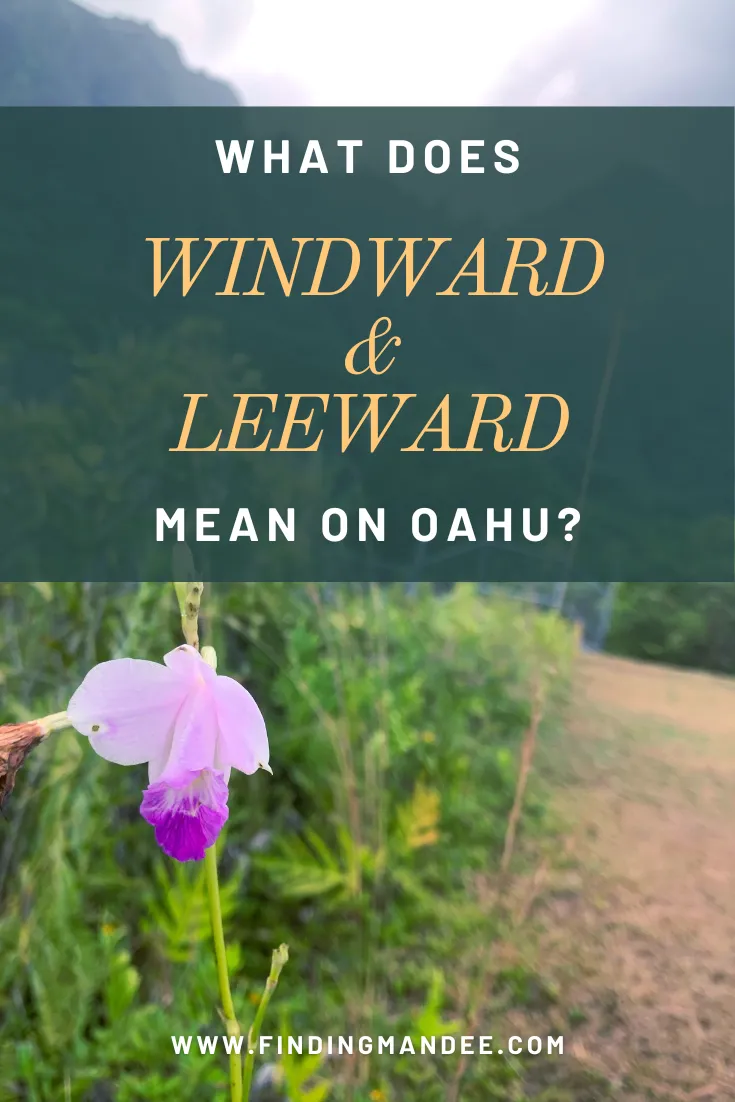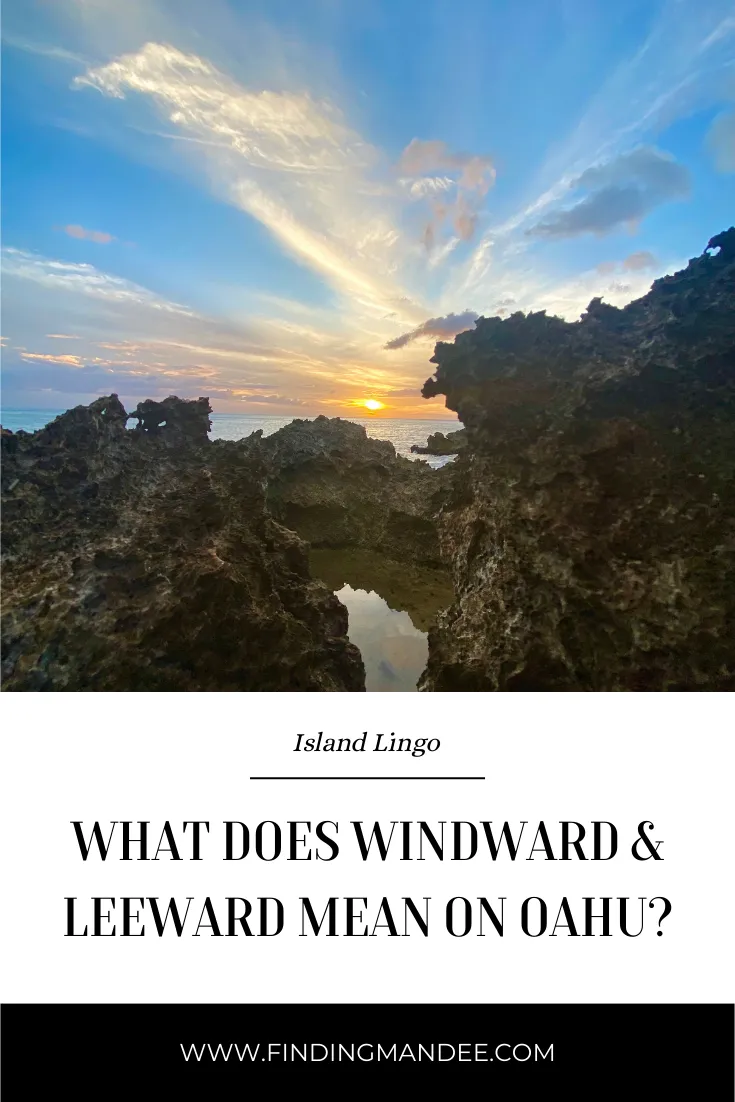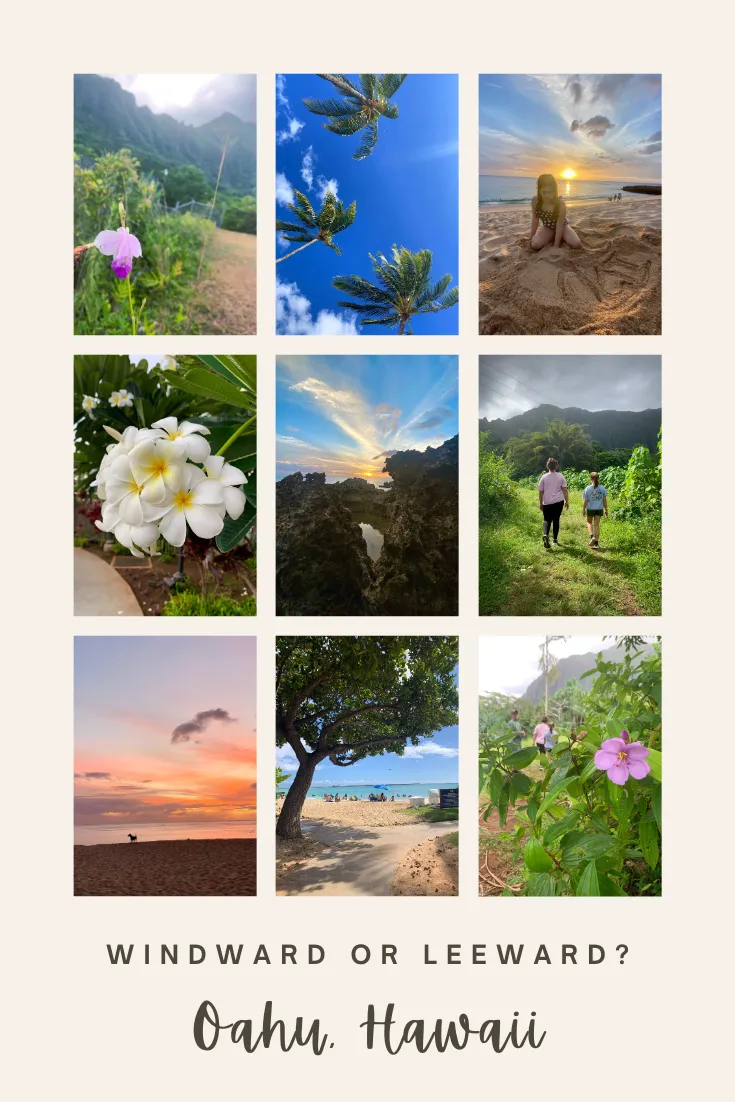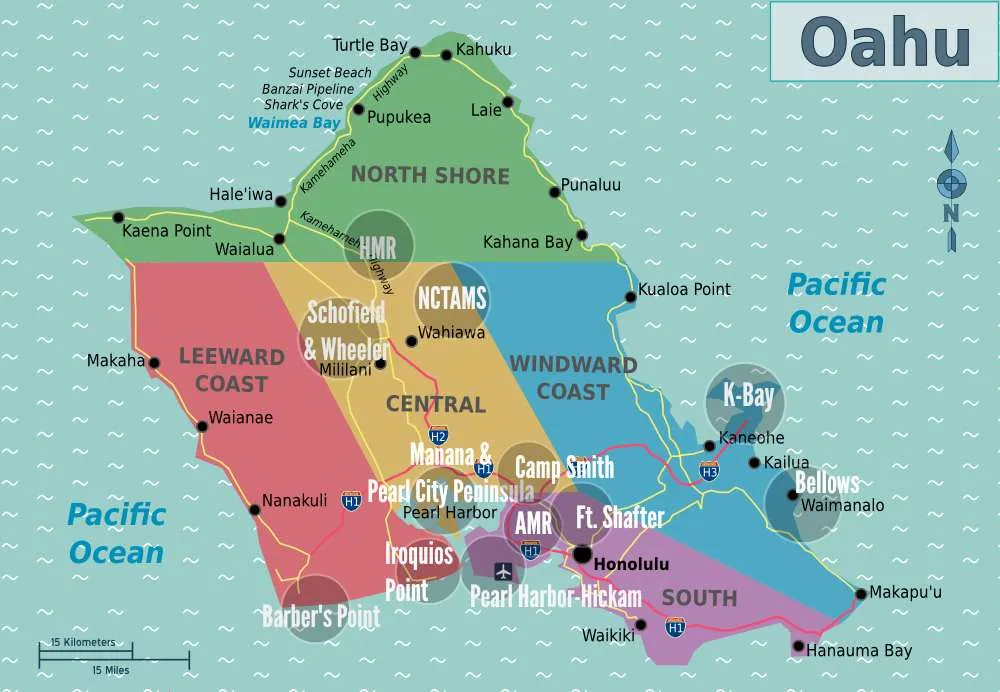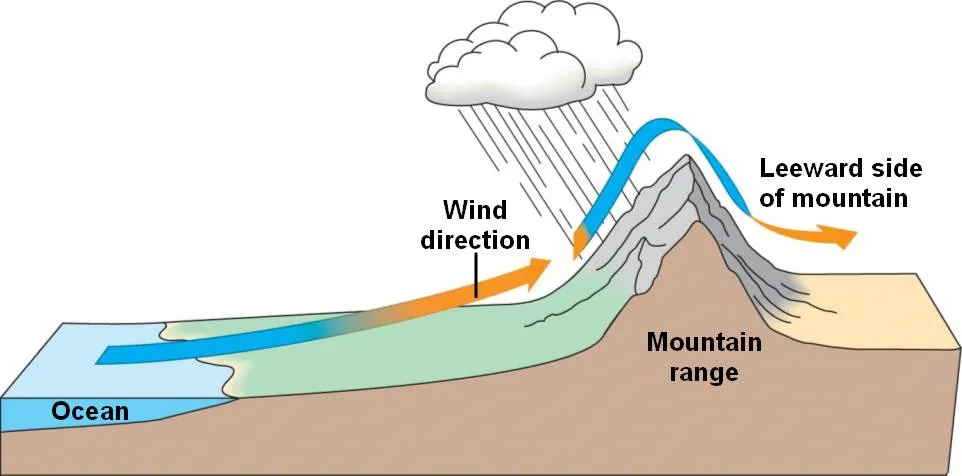[Disclaimer: Finding Mandee is reader-supported, if you purchase through links on my site I may earn an affiliate commission at no additional cost to you. As an Amazon Associate, I earn from qualifying purchases.]
We landed on the island of Oahu a week ago for our big PCS from Fort Cavazos to Wheeler Army Airfield. And we are already in love with this beautiful island!
However, learning our way around has been challenging, especially when folks are giving us directions and suggestions of places to go using the unfamiliar terms ‘windward and leeward’.
I’ve heard these terms before, mostly by reading them in books. But I honestly had no clue what they meant until I got here and was forced to Google it.
What Does Windward and Leeward Mean?
Windward is defined as:
“facing the wind or situated on the side facing the wind”
www.merriam-webster.com
For the island of Oahu, windward means the east side of the island. The trade winds come from the north and the east.
Leeward is defined as:
“the side sheltered or away from the wind; downwind
www.merriam-webster.com
So, for the island of Oahu, leeward means the west side of the island. The south side of the island is also protected from the wind, so the water is usually calmer there.
They Look Different
After you know the difference, it’s not hard to tell which side is which just by looking at pictures. The windward and leeward sides of the island look different!
The trade winds blow clouds to the windward side of the island, gathering moisture from the ocean as they move in. So, the windward side typically gets more rain than the leeward side of the island, because the clouds dry out as they move across the Koʻolau mountain range.
That means that Windward Oahu has a lush jungle look. The mountains on this side of the island cover themselves in tropical green rainforests. Temperatures tend to be cooler on the windward side and this side of the island is more rural.
Whereas Leeward Oahu is much warmer and drier. The mountains on this side of the island are rocky and covered with grasses and smaller shrubs. Since the leeward side boasts more sunshine and flatter areas that are more suited to development, this side of the island is more urban.
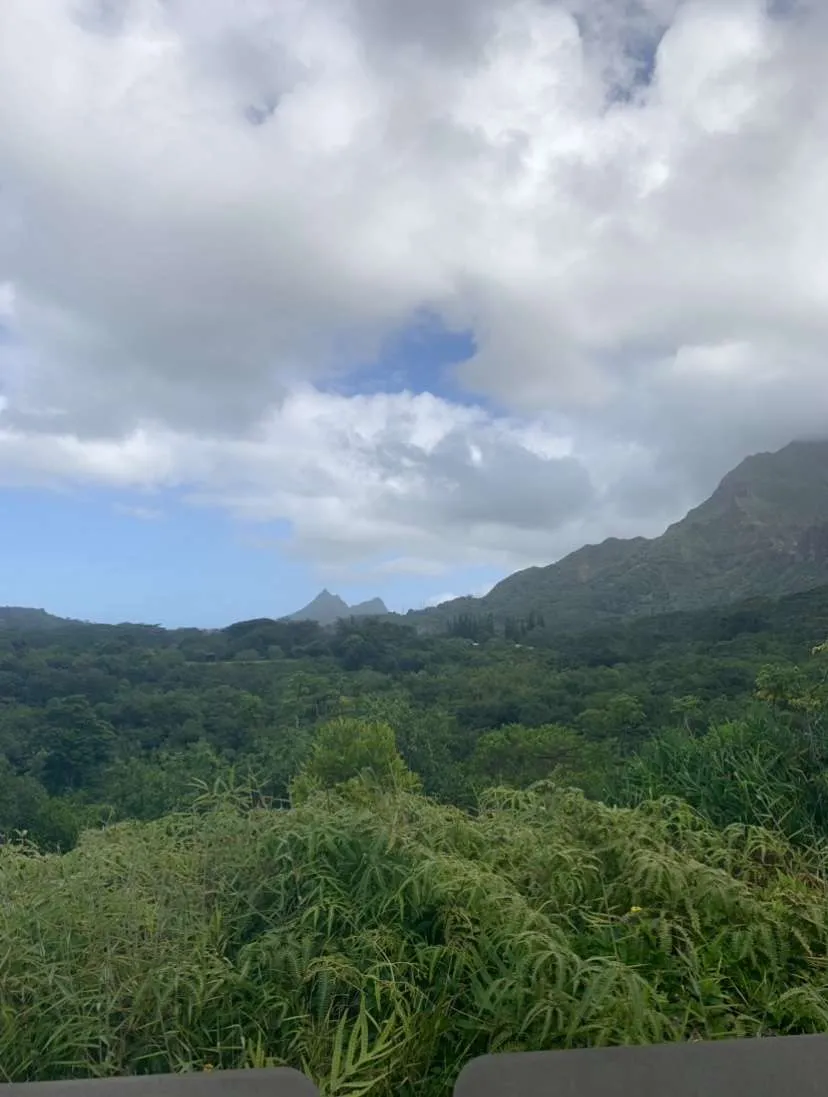
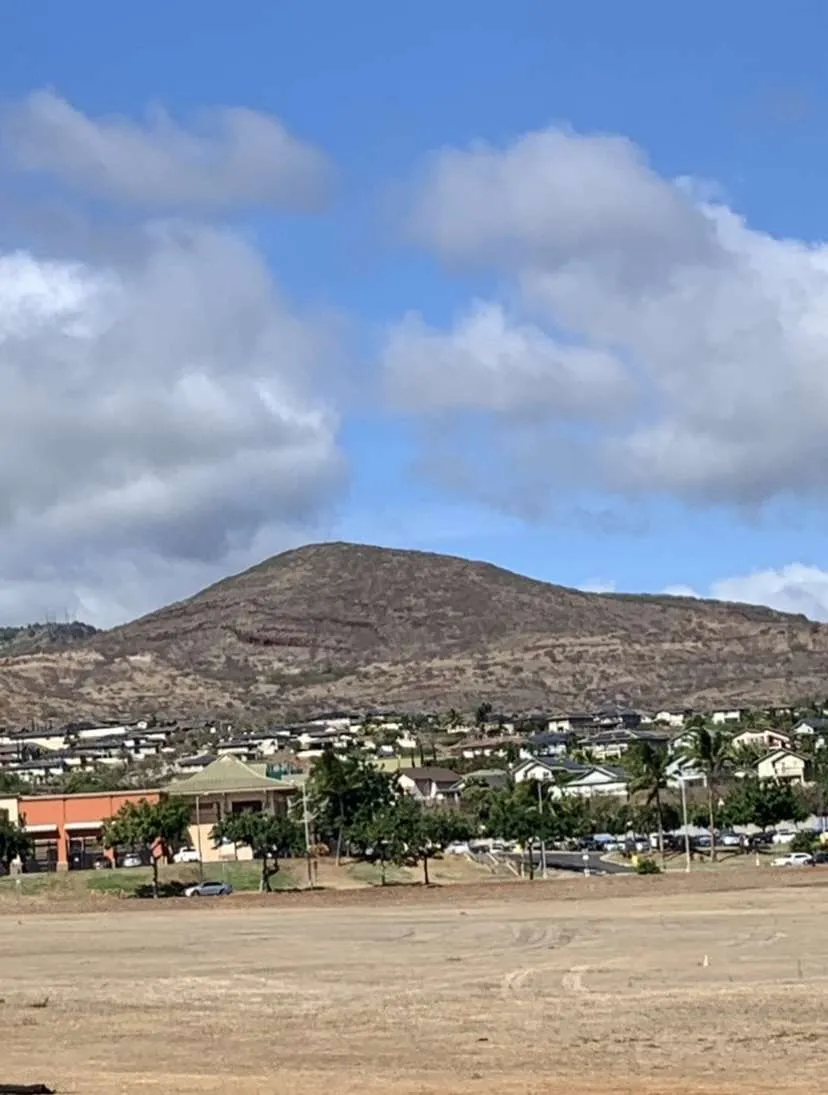
Both sides have great beaches, however, the waters are calmer on the leeward side. Waikiki Beach, on the leeward side of the island, is one of the most famous beaches in the world. It boasts small swells and mostly calm waters.
The North Shore, on the windward end of the island, is famous for its huge waves and hosts world-famous surfing competitions.
We have been to both sides of the island and I like both of them for different reasons. I think if we are planning a day at the beach, I would prefer the leeward side. There would be more sun and less worry about the kids in the calm waters. However, I think I would enjoy hiking more in the lush jungles of the windward side.
And the best part is that they’re just a short drive away from each other. Oahu is only 44 miles long and 30 miles wide, so you can switch from windward to leeward in less than an hour!

